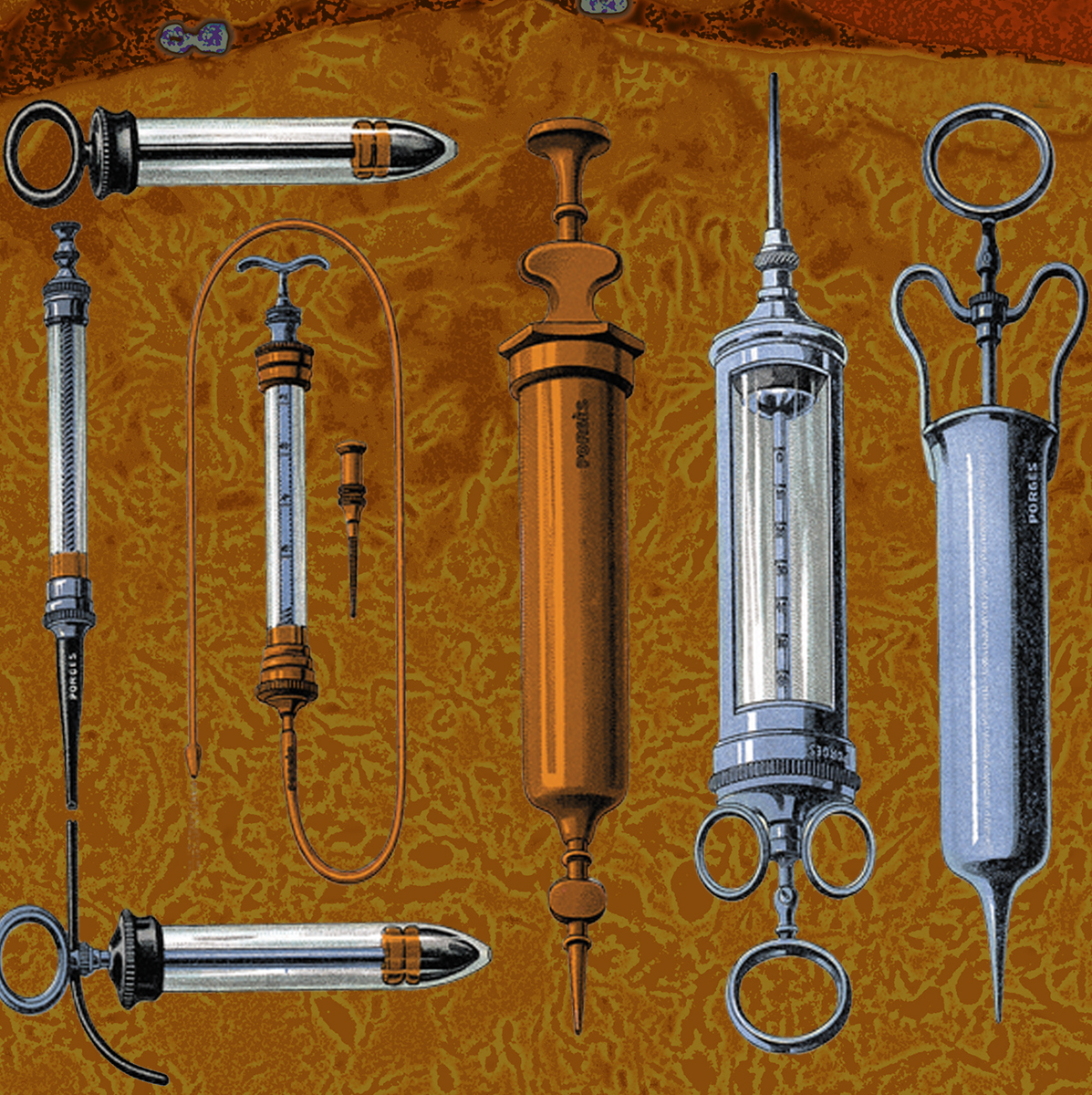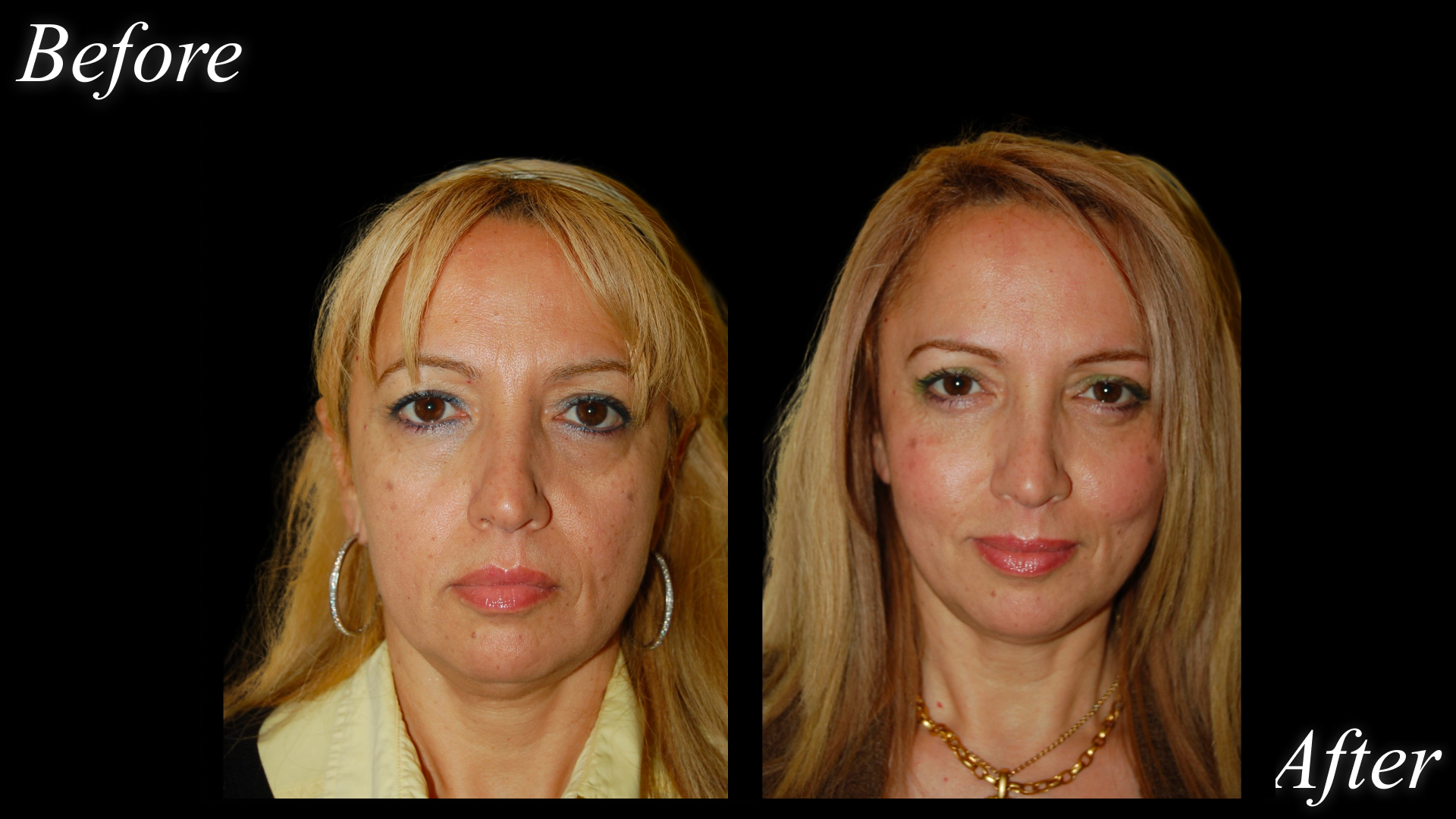
Hollowers and saggers. That’s how TV plastic surgeon Dr. Paul David slickly explains the two paths of the aging face to Carrie Bradshaw when she finds herself (and her own aging face) unwittingly subject to his scrutiny on an episode of And Just Like That. The surgeon may have been faux, but his interpretation was not; real MDs agree that as the face ages people tend to either lose volume (hollowers) or experience increased laxity (saggers), and yes, sometimes both. “Often gravitational-related and volume-related facial aging are conflated, and they’re really physiologically and physically discrete entities,” says Sean Alemi, MD, a board-certified facial plastic surgeon based in New York. And while options to address said effects of aging like facelifts and fillers are already very much a part of the mainstream aesthetics conversation, something else is courting more of our collective attention lately: fat.
“Fat is having a resurgence,” says board-certified Beverly Hills-based facial plastic surgeon Babak Azizzadeh, MD, of the renewed interest in its usage for cosmetic procedures. Fat grafting (or fat transfer) relies on live fat cells that have been harvested (via liposuction) from one part of the body and then injected into another, most often the face. The procedure is not new—the first fat grafting was performed way back in 1893 by a German surgeon who used fat from an arm to fill out a scar near the eye, and it gained more traction with the popularity of lipo in the 1980s—but it’s experiencing a new wave of interest.
According to healthcare marketplace Real Self, searches for facial fat transfer went up by 254 percent in 2024 alone. People have simply come to appreciate that volume loss is a significant part of facial aging—that oft-referenced stat about how we start to lose one percent of our collagen yearly starting in our twenties is true. And volume loss is an issue you can’t make up for by just lifting tissue, says Azizzadeh; you need to restore what has diminished with nature and time. That’s where fat comes in.

What Are the Benefits of Fat Transfer Over Fillers?
While fillers, both hyaluronic-based options like Juvederm and biostimulatory ones like Sculptra, are well-known and well-loved go-tos for restoring volume, part of the reason that many people are instead seeking out fat to fill out their nasolabial folds, marionette lines, or cavernous temples, is because it’s not an extrinsic product; your own body produces it. “The buzzword is natural aesthetics right now and fat is not foreign, that’s the main difference,” says Azizzadeh. “Everyone loves the idea of using something that’s their own tissue, and it’s a great technique.”
It’s not only the substance that’s different—the technique is, too. Unlike traditional liposuction, harvesting fat for facial transfer is done by hand, says board-certified oculofacial plastic surgeon Robert Schwarcz, MD, with a micro cannula attached to a syringe rather than a high-pressure suction machine so you don’t burst or traumatize the fat cells. The fat donor site can be various locations on the body but most often the fat comes from the abdomen or thighs (where we tend to carry extra padding). “But we can’t prove yet whether fat is going to be better from one source [on the body] than another,” notes Alemi. After fat is harvested, says Schwartz, it’s decanted or centrifuged to ensure its purity. “These are live tissue grafts that can easily die before implantation so it’s important to handle with care,” says Schwarcz. Board-certified Manhattan-based facial plastic surgeon Lesley Rabach, MD, is using fat more frequently than ever in her practice and says she’s noticed that patients who live healthier lifestyles (meaning nutrient-rich diets and plenty of water, no smoking, and little alcohol) tend to produce fat that is less flimsy and watery, more hydrated and plumper, which makes for a more successful transfer.
What Are the Risks of Fat Grafting?
Part of the challenge with fat transfer is its inherent unpredictability: usually only about 50 percent of the fat cells that are injected into the face will survive and thrive, and it often takes months to see the result on the face. Alemi explains this by using the analogy of sod versus grass seeds. “We’re taking grass seeds and planting them into the face and hoping they’re going to take root and grow, as opposed to bringing a root supply and nutrients along with them,” Alemi explains. Going the fat route is also simply more of a commitment, both financially (in New York filler usually costs $700-$1,500 per syringe with number used depending on location, while fat grafting is charged by procedure and runs $5,000-$8,500) and physically: it’s a surgery, so it requires general anesthesia and more recovery time.
Volume loss is an issue you can’t make up for by just lifting tissue—you need to restore what has diminished with nature and time. That's where fat comes in.
Dr. Azizzadeh
Are There Any Alternatives to Fat Grafting That Offer Similar Results?
For those who like the idea of fat theoretically, but are less enthused about the idea of surgery, there is Renuva, which, though it is an injectable, shares little in common with fillers or neurotoxins. Renuva contains the same growth factors, proteins and collagens as native fat, minus the DNA or live cells. “That it’s not made of synthetic products is what makes it unique,” says board-certified plastic surgeon Haideh Hirmand, MD, who has been using Renuva in her Manhattan practice for areas of volume loss on the face. The product is composed using donor human tissue, a fact that might make some people feel initially squeamish but says Evi Chnari, senior director in research & development at MTF Biologics (the company behind Renuva), is a method subject to rigorous processing rules. Besides MTF’s own stringent screening of donors (donor tissue from cadavers that have been donated to science) and strict processing methods, Renuva also must abide by the criteria established by the FDA and the AATD (American Association of Tissue Banks).
When injected, Renuva creates a honeycomb-like structure that the person’s own fat will eventually latch onto and fill in. “The structural proteins that Renuva retains from the adipose tissue it comes from act as a scaffold and the cells of the patient recognize the structure and go in and start remodeling it into their own fat,” says Chnari. Hirmand sees Renuva as an ideal fat grafting alternative, especially for thin patients who do not have fat to harvest or those seeking an option with more reliable (remember that aforementioned 50 percent fat stat) volume retention. Unlike fat grafting, 100% of the fat that forms in the area treated with Renuva develops a vascular supply and becomes the body's own natural fat. Patients with certain medical conditions related to bleeding disorders and poor wound healing, or anyone wary of surgery, should also seek alternatives to fat grafting, says Rabach.

Are There Any Limitations With Fat Grafting?
Going the fat route comes with different considerations than filler. First, fat isn’t fixed. “Fat cells have memory and can increase in size during times of weight gain,” says Schwarcz. Something to take into account if weight fluctuations are frequent. Second, fat transfer is permanent; after six months you’ll have a good idea how much fat will survive, then that’s with you forever, only increasing or decreasing with weight gain or loss, says Doft. Unlike filler, it can’t be reversed which is why most doctors wielding it take a very conservative approach. Despite these factors though, fat is considered liquid gold by plastic surgeons who regularly piggyback it on eye- and facelifts.
“Fat is wonderful for augmenting a lift because you never want to only tighten the skin, you also want to add volume,” says board-certified New York plastic surgeon Melissa Doft, MD. More doctors are also using fat solo as a volume restorer—they claim it gives a softer, more natural look and also improves skin quality—and taking it (and sometimes Renuva, too) below the neckline to plump aging hands and address indentations caused by cellulite. Doft has even been repeatedly using fat for breast augmentations. “My favorite way of using fat is for somebody who wants to give breasts a little more fullness but doesn’t want something as robust as a traditional implant,” says Doft, noting that there are other areas, like the eyes and lips, that aren’t appropriate for fat grafting. Dr. Doft explains that this is because the skin is thinner in those areas so the fat can feel and look lumpy with any weight gain.
So if we can restore volume without using a synthetic product, will our interest in filler flatline? Azizzadeh reports that three years ago in his office fat was being used in tandem with facelifts or blepharoplasties 90 percent of the time, but now those numbers have changed. “For a lot of people coming in, fat grafting has really replaced fillers which is a tremendous shift,” he says. And Doft and Rabach are seeing a subset of younger patients who are choosing fat instead of filler. That fat’s ballooning popularity coincides with the so-called filler fatigue is no accident.
Right now there’s simply an American obsession with fat.
Dr. Melissa Doft
Why Fat Grafting and Why Now?
"One reason fat has come to the forefront in aesthetic rejuvenation is that people are becoming a little more cautious about how they replace volume,” says Alemi. Because fillers are hydrophilic (meaning, they absorb water), says Alemi, when you have inappropriate volumes in inappropriate locations, the swelling creates the dreaded pillow face. “Fat doesn’t retain fluid the way filler does so you get a more natural rejuvenation, but if you put too much in, you’re still going to look over-injected,” Alemi explains.To the untrained eye, fat, which is injected much deeper than filler, may not appear different, but it feels, say doctors, softer and more like, well, you. “It’s not a foreign body and it won’t dissolve over time which are huge positives," says Doft. “Fat is natural and it feels it.”
Doctors add that both fat and Renuva are a no-go for lips and can be very challenging around the eyes, so though fat may be a hot topic, filler isn’t going anywhere for patients who want to add volume in those areas. And considering the steady popularity of GLP-1 drugs, and the surge of rapid facial volume loss they have unleashed, neither is fat. Of course, the irony of our cultural rejection of fat in some parts of the body, while we gleefully inject it into others is hard to ignore. But says Doft: “Right now there’s simply an American obsession with fat.”







